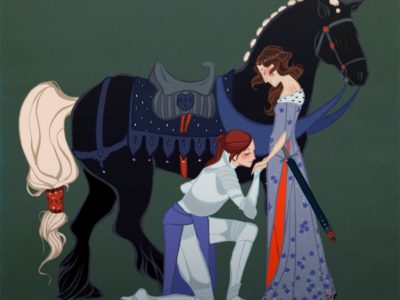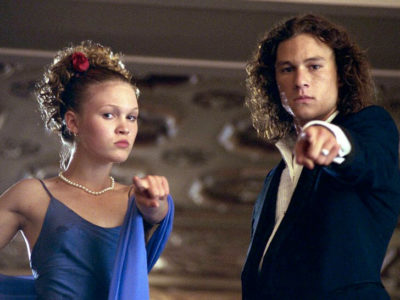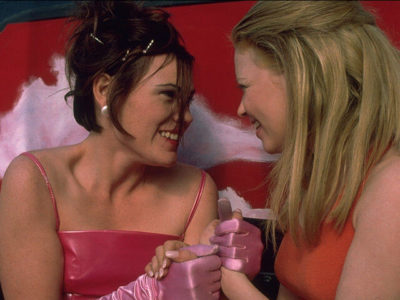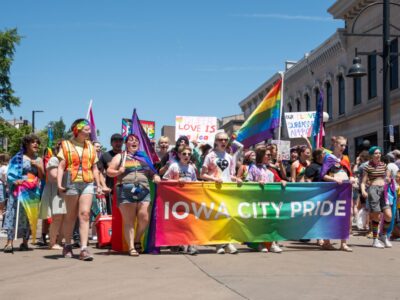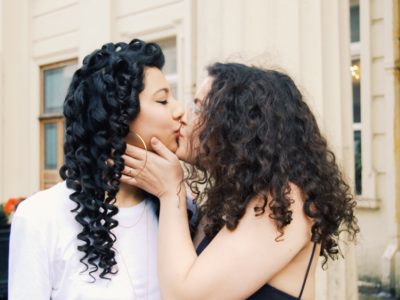This past February 14 my Mum called to wish me a happy Valentine’s Day. My mother is one for flamboyant cards and letters. So I half-expected to find a bright red envelope covered in hearts lying in the mailbox that morning. Alas, none appeared.
Mum explained to me that, despite searching high and low through the stacks of cards, she couldn’t find a card that was right for my girlfriend and me. Cute puppy theme? Check. Flowers? Check. Funny quips? Check. Hetero couple? Undoubtedly check. But female couples? No lesbian Valentine’s cards in sight.
As much as I hate to admit a soft spot for corporate America, I do find Valentine’s Day quite fun. Who wouldn’t want to spend a day reveling in the one they love? And don’t get me wrong; I’m not planning a tirade against heteronormativity in the U.S. dating scene. But this February 14 was the first Valentine’s with my girlfriend. I couldn’t help but go through the day noticing little mishaps that would only apply, or indeed be noticed, by a queer like myself.
Dinner, for instance. I took my girlfriend out to a small local restaurant. It’s a cute place, strung with fairy lights and art deco paintings, filled to the brim with town hipsters and a favorite for Colorado College students. They had a Valentine’s special menu that evening. The tables were strewn with roses and couples gazing adoringly into each other’s eyes.
Enter the queer couple.
I’m not someone who typically cares about the funny looks I sometimes get when I’m walking down the street hand in hand with my girlfriend. Sure, I don’t appreciate the creepy guy staring me down from his car window as he drives down the street, but I have better things to spend my time worrying about. Saying that, Colorado Springs is a conservative town, and it’s hard to miss the looks of surprise and (sometimes) disapproval. So when we sit next to a table of two older couples, clearly on a double date, I can’t help but notice the glances thrown our way. Are they judging? Or are they just checking out the neighbor game?
We order drinks and food and have a look around. My queer friends and I like to play a game called “Best Friends or Gays.” When you walk around town and you see a same-sex pair that might be a gay couple, you bet whether they’re queer and together or just best friends holding hands. Gaydars at the ready! Point is, we tend to notice when there are other queer couples around. It’s like when some people see a puppy or a cute baby and get excited; for me, it’s queers and a sense of solidarity.
Earlier in the afternoon, my girlfriend had taken me for a picnic. We sat in the sun on a rocky ledge above a mountain dirt track and drank beer and nibbled on cheese and crackers. A few cars passed us on the road below. As the drivers glanced up at us, I wondered; did they see us as a couple, or just as two girls enjoying the sunshine? Could they tell the difference between best friends and gays?
When we arrived at dinner, we were without doubt the only queer couple in the building. One of the waiters—my girlfriend knew him from years of frequenting the restaurant—was gay, but he was serving tables on the other side of the room. But I’m a slow eater, and by the time we’d reached dessert a couple of hours later we were one of three queer couples in the room.
At the risk of sounding rainbow-obsessed, I couldn’t keep a smile from creeping onto my face. Finding other queers in a heterosexual-only space is like finding a friend in a sea of strangers; there is a sense of camaraderie and commonality, regardless of whether you know them. Instantly, I felt a sense of shared experience.
Finally, we are ready for the check. Now, something I should explain about my girlfriend is that she tends to shop in the men’s department. Her signature look is skinny jeans, boots and a shirt buttoned all the way up to the collar. I don’t want to get into gender roles, but sitting opposite my lipstick and flowing dresses, she appears the more masculine half of the relationship.
Despite our supposedly post-sexist society, nine out of 10 times I go out for drinks or food with a male friend, he is given the check. I’m not sure waiters even realize the assumption they are making (that the guy will pay). It’s just reflex. But when our server comes to give me and my girlfriend the check, he seems confused. His natural laws of dating are thrown off balance, his archetypal gender divide is missing. After a pause, he passes the check to my girlfriend. We might both have long hair, but she—literally—is wearing the trousers. We laugh, she passes the check and I pay. Dinner was my treat.
I had a wonderful Valentine’s Day and a beautiful Valentine. In all seriousness, not getting a card from my Mum was not the end of the world. Mostly, my girlfriend and I laugh about the confused waiters and surprised looks; malicious intent is extremely rare.
But making my way through Valentine’s season this year, I couldn’t escape the apparentness of my divergence, the way that my relationship model doesn’t fit the conventional format that corporate America subscribes. But more and more, I notice the other gay couples out to dinner and the gender neutral restrooms in the restaurant and the queer-friendly public spaces where I’m free of funny looks, and it makes me smile. Maybe, next year, my Mum will find me the perfect lesbian card for Valentine’s Day.

